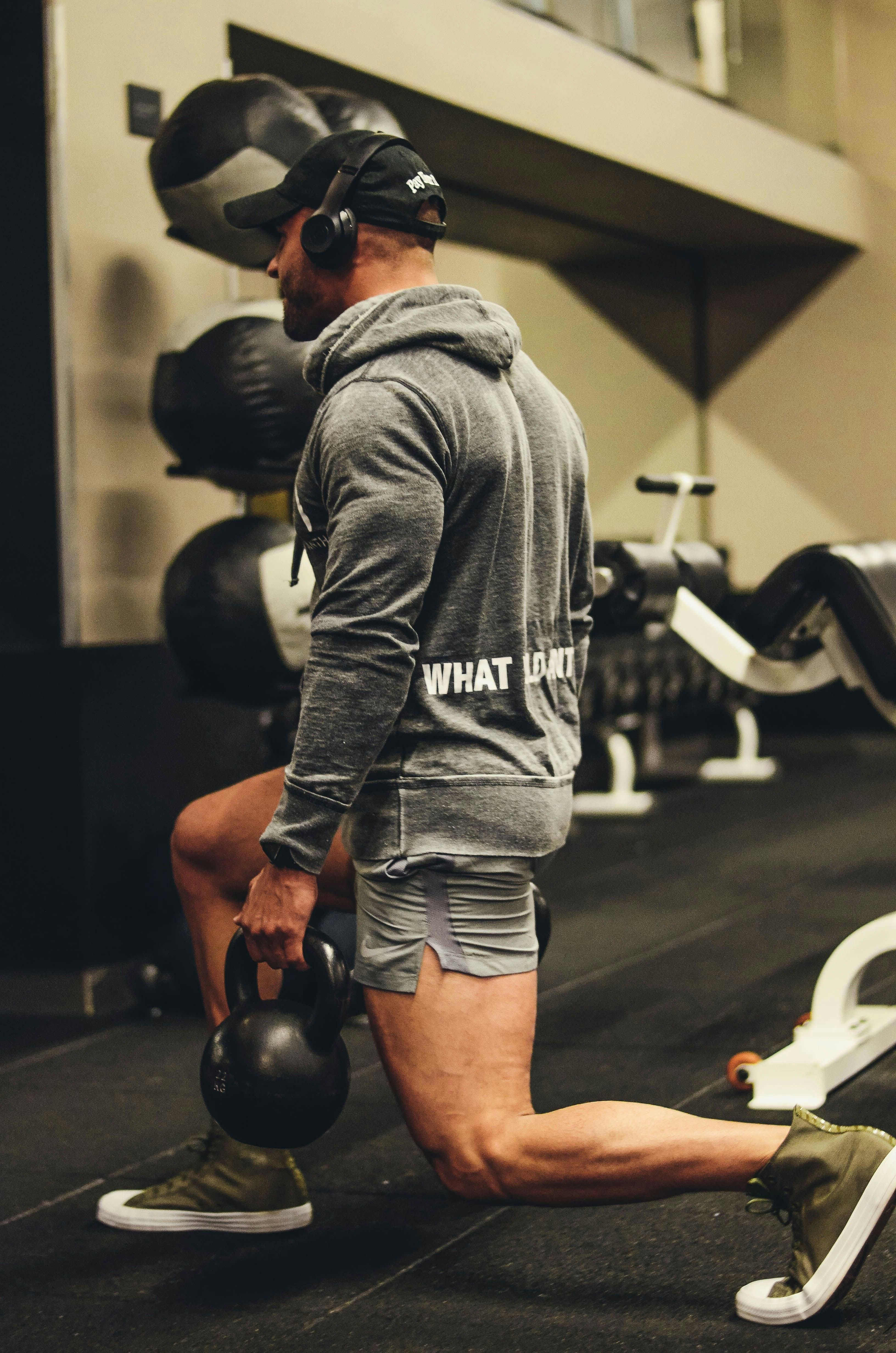How to Improve Posture Problems (Like Hunchback and Anterior Pelvic Tilt) Through Fitness

How to Improve Posture Problems (Like Hunchback and Anterior Pelvic Tilt) Through Fitness
Introduction
Poor posture is a common issue that affects millions of people worldwide. Among the most prevalent posture problems are kyphosis (commonly referred to as a hunchback) and anterior pelvic tilt (APT). These postural issues often arise from sedentary lifestyles, prolonged sitting, and improper alignment during daily activities. If left unaddressed, they can lead to discomfort, pain, and even chronic conditions over time.
However, with the right approach to fitness, it is possible to correct these posture problems and improve your overall spinal health. In this article, we will explore how fitness, through specific exercises and stretches, can help you address these issues, improve your posture, and prevent further complications.
1. Understanding Kyphosis and Anterior Pelvic Tilt
Kyphosis (Hunched Back)
Kyphosis is a condition characterized by an excessive forward curvature of the upper spine (thoracic region), leading to a "hunched" or rounded back. While some degree of spinal curvature is natural, an exaggerated curve can result in pain, limited movement, and a decreased quality of life. Kyphosis is often seen in people who spend long periods sitting, particularly in a slouched position.
Causes of Kyphosis
- Poor posture : Sitting or standing with a rounded back and shoulders.
- Weak upper back muscles : Insufficient muscle strength in the upper back and shoulders.
- Tight chest muscles : Overactive chest muscles can pull the shoulders forward.
- Lack of spinal mobility : Reduced flexibility in the spine can exacerbate the curvature.
Anterior Pelvic Tilt (APT)
Anterior pelvic tilt occurs when the pelvis tilts forward, causing an exaggerated curve in the lower back (lumbar region). This postural imbalance is often caused by tight hip flexors and weak glute and core muscles. People with APT tend to have a protruding abdomen and an exaggerated lower back curve, which can contribute to lower back pain and discomfort.
Causes of Anterior Pelvic Tilt
- Prolonged sitting : Sitting for extended periods can shorten the hip flexors and weaken the glutes and core.
- Poor posture during standing : Improper alignment while standing can contribute to an anterior pelvic tilt.
- Muscular imbalances : Tight hip flexors and weak glutes and hamstrings are often responsible for APT.
2. Fitness Strategies for Correcting Kyphosis
Strengthening the Upper Back and Shoulders
To correct kyphosis, it is essential to strengthen the muscles of the upper back, particularly the rhomboids , trapezius , and posterior deltoids . These muscles play a crucial role in pulling the shoulders back and supporting a neutral spine.
Recommended Exercises for Strengthening Upper Back Muscles:
- Rows (using dumbbells or resistance bands): Rows help to target the rhomboids and trapezius muscles, which are responsible for pulling the shoulder blades back.
- Reverse Flyes : This exercise helps strengthen the posterior deltoids and upper back muscles, improving posture.
- Face Pulls : A great exercise to target the upper back and rear shoulders.
Stretching the Chest and Front Shoulders
Tight chest muscles are one of the leading causes of kyphosis, as they can pull the shoulders forward and exacerbate the rounded back appearance. Stretching the chest and front shoulder muscles can help to counteract this imbalance.
Recommended Stretches for the Chest:
- Doorway Stretch : Stand in a doorway with your arms placed on the door frame, and gently lean forward to stretch the chest muscles.
- Chest Openers : Hold your hands behind your back and lift your arms to open up the chest and shoulders.
Improving Spinal Mobility
A lack of spinal mobility, especially in the thoracic spine, can contribute to kyphosis. Incorporating mobility exercises can help improve the flexibility of the spine and allow for better posture.
Recommended Exercises for Spinal Mobility:
- Cat-Cow Stretch : This yoga move improves spinal flexibility and helps mobilize the entire back.
- Thoracic Spine Rotation : Sit on the floor with your legs crossed and gently rotate your upper back to each side, improving mobility in the thoracic spine.
3. Fitness Strategies for Correcting Anterior Pelvic Tilt
Strengthening the Glutes and Core
Anterior pelvic tilt is often caused by weak glutes and core muscles. Strengthening these muscles will help restore balance to the pelvis and improve posture. Focus on exercises that activate the glutes and strengthen the core to combat APT.
Recommended Exercises for Strengthening the Glutes:
- Hip Thrusts : A great exercise for targeting the glutes and improving pelvic alignment.
- Glute Bridges : This movement activates the glutes while helping to stabilize the pelvis.
- Squats : Squats engage the glutes and hamstrings, helping to strengthen the lower body and prevent APT.
Recommended Core Exercises:
- Planks : Planks target the entire core and help stabilize the pelvis.
- Dead Bugs : A great exercise for engaging the deep core muscles and improving pelvic alignment.
- Leg Raises : This exercise strengthens the lower abs, which play a role in correcting pelvic tilt.
Stretching the Hip Flexors
Tight hip flexors are a major contributor to anterior pelvic tilt. Stretching and lengthening these muscles can help reduce the forward tilt of the pelvis.
Recommended Stretches for the Hip Flexors:
- Lunge Stretch : Take a step forward into a lunge position, keeping your hips square, and feel the stretch in the hip flexors.
- Pigeon Pose : A yoga pose that deeply stretches the hip flexors and glutes.
- Kneeling Hip Flexor Stretch : Kneel on one knee, pushing the hips forward to stretch the hip flexors on the other side.
Improving Pelvic Alignment
It’s essential to focus on improving pelvic alignment through specific exercises. This will help restore a neutral pelvic position and reduce the impact of APT.
Recommended Exercises for Pelvic Alignment:
- Pelvic Tilts : Lying on your back, gently tilt your pelvis forward and backward, activating the glutes and core to restore proper pelvic position.
- Standing Pelvic Rock : Stand with your feet shoulder-width apart and gently tilt your pelvis forward and backward, focusing on engaging the core and glutes.
4. Lifestyle Tips to Support Posture Correction
While exercises and stretches are crucial for improving posture, lifestyle changes can also make a big difference in maintaining proper alignment.
Posture Awareness
Throughout your day, be mindful of your posture. Whether you're sitting at a desk, standing, or walking, ensure that you maintain a neutral spine position. Avoid slouching or excessive arching of your back. Sitting with your shoulders back, chest open, and spine aligned can help prevent further postural issues.
Ergonomic Work Setup
If you work at a desk for long hours, set up an ergonomic workstation to reduce strain on your body. Adjust your chair, desk, and computer monitor to maintain a neutral spine position. Consider using a standing desk or taking breaks to move and stretch every 30 minutes.
Regular Movement
Avoid prolonged sitting and incorporate regular movement into your day. Walk around, stretch, or perform simple mobility exercises to keep your muscles and joints flexible and prevent stiffness.
5. Conclusion
Improving posture problems such as kyphosis and anterior pelvic tilt is not an overnight process, but with dedication and the right fitness strategies, it is entirely possible. By strengthening key muscle groups, stretching tight muscles, and improving spinal mobility, you can correct these postural issues and enjoy improved comfort and alignment.
Consistency is key. Incorporate these exercises into your daily or weekly routine, and over time, you will notice improvements in your posture, flexibility, and overall well-being. Remember, posture correction is a journey, and small changes add up to big results. Stay patient and stay committed to your fitness plan for lasting improvements.
References
- Kaur, P., & Saini, M. (2015). "A study of postural correction exercises on kyphosis in young adults." Journal of Bodywork and Movement Therapies .
- Akuthota, V., & Nadler, S. (2004). "Core strengthening." Archives of Physical Medicine and Rehabilitation .
- Lee, J., & Lee, K. (2017). "Effects of pelvic tilt and pelvic alignment exercises on posture." Journal of Physical Therapy Science .
This article provides a comprehensive guide on improving common posture problems like kyphosis and anterior pelvic tilt. If you need additional exercises or have any questions, feel free to ask!




